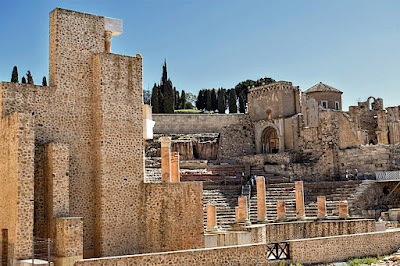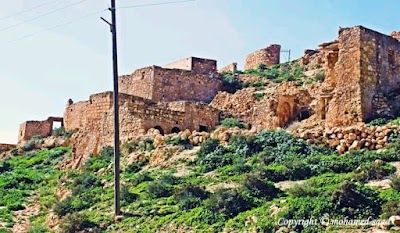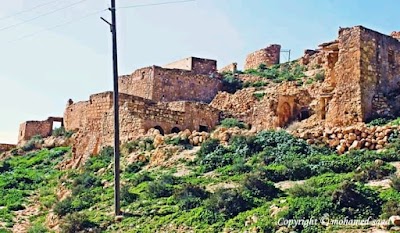Roman Ruins of Sabratha (أطلال سبراتة الرومانية)
Overview
Located along the stunning Mediterranean coastline in Libya's Jabal al Gharbi District, the Roman Ruins of Sabratha offer visitors a captivating glimpse into a world of extraordinary architectural marvels and historical grandeur. This archaeological treasure once flourished as a bustling city at the intersection of ancient trade routes linking Africa, Europe, and Asia, making it a vital hub of commerce and culture.
Sabratha's history dates back to the 5th century BC, when it was established as a Phoenician trading post. As it became part of the Roman Empire, the city experienced a magnificent period of growth, particularly from the 2nd to the 3rd centuries AD. During this time, Sabratha emerged as a crucial center for trans-Saharan trade, dealing in coveted goods such as ivory, gold, and exotic animals that were highly sought after in the Roman world.
One of the most remarkable features of Sabratha is its well-preserved theatre, a stunning testament to Roman architectural brilliance. Constructed in the late 1st or early 2nd century AD, this impressive structure could accommodate up to 5,000 spectators. Its three-story scaenae frons (stage building), adorned with intricate carvings and statues, still commands attention today. As you stand in its majestic presence, it’s easy to envision the vibrant performances that once captivated audiences, providing a vivid insight into the cultural life of this ancient metropolis.
As you wander through the ruins, you'll encounter numerous other significant structures that have withstood the test of time. The Temple of Liber Pater, dedicated to the Roman god of wine and freedom, and the Temple of Serapis, showcasing a harmonious blend of Greek, Roman, and Egyptian architectural styles, are particularly noteworthy. Additionally, the Capitolium, a monumental temple complex dedicated to the Roman triad of Jupiter, Juno, and Minerva, highlights the city's religious importance at the peak of the Roman Empire.
A visit to Sabratha also presents the opportunity to explore the ancient basilica, which was later transformed into a Christian church during Byzantine rule. This evolution reflects the city’s rich and diverse history, shaped by various cultural influences over the centuries. The basilica’s exquisite mosaics and marble columns testify to the artistic prowess and aesthetic values cherished by its former inhabitants.
Beyond the grand monuments, Sabratha's residential quarters and public baths offer an intimate glimpse into daily life in ancient times. The ruins of homes, featuring remarkably preserved mosaic floors, and the sophisticated bath complexes equipped with heating systems reveal the luxurious lifestyles enjoyed by its residents.
Historians and archaeologists continue to be fascinated by the meticulous city planning evident in Sabratha. Its grid-like layout, complete with well-paved streets, public forums, and efficient water management systems, underscores the city's prominence as a well-organized urban center of its time.
Travelers to Sabratha can also soak in the surrounding natural beauty, with the ruins set against the backdrop of the tranquil blue Mediterranean waters. This serene coastal setting invites reflection on the rise and fall of civilizations, with the sea serving as a constant witness to history.
For those eager to delve deeper into Sabratha's past, the local museums provide valuable insights through their collections of artifacts, sculptures, and inscriptions. These exhibits further illuminate the daily lives, religious practices, and the overall grandeur that characterized this ancient city.
In recognition of its universal cultural value, the Roman Ruins of Sabratha were declared a UNESCO World Heritage Site in 1982, highlighting the importance of preserving them for future generations. Visitors today are encouraged to honor the site’s historical significance, ensuring that its legacy endures.
Whether you are a history enthusiast, an archaeology lover, or simply intrigued by the stories of ancient civilizations, a visit to Sabratha promises to be a profoundly enriching experience. The ruins are more than mere remnants of stone and mortar; they are echoes of a bygone era that continue to narrate a saga of imperial grandeur, artistic genius, and human endeavor.
So pack your curiosity and camera, and embark on a remarkable journey through time at the Roman Ruins of Sabratha. It’s not just a destination; it’s an extraordinary exploration of ancient history brought vividly to life!





